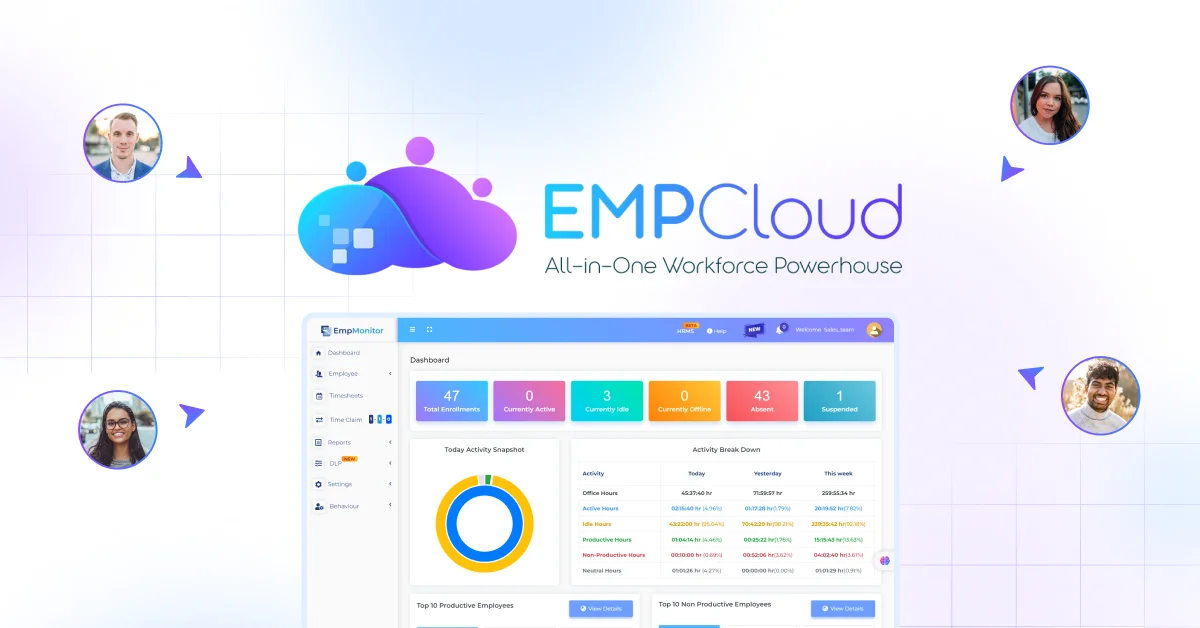
Work culture has undergone a dramatic transformation in recent years. The rigid 9-to-5 schedule that once dominated corporate life is slowly being replaced by flexible working systems that prioritize outcomes over hours. At the heart of this shift lies an innovative approach known as the flextime manager, a tool and strategy that helps organizations bring structure, accountability, and freedom together in a single workflow.
This guide explores every important aspect of the flextime manager, from what it is and how it works to its implementation strategies, benefits, and long-term impact on organizational success.
Hit ‘Play’ Button & Tune Into The Blog!
What Is Flextime Manager And Why Does It Matter?
Before diving deeper, it’s important to understand the concept. Simply put, a flextime manager is a structured framework or digital system that allows employees to choose their work hours while ensuring accountability for performance and deadlines.
In today’s hybrid work era, flexibility and efficiency must go hand in hand. This system helps organizations maintain balance, empowering employees to work on their terms without compromising productivity.
Why Should Organizations Adopt A Flextime Manager?
Modern employees value flexibility just as much as compensation, and in today’s workforce, a flexible work environment is a key factor in job satisfaction and retention. Without the right framework, flexible work can lead to confusion, missed deadlines, and uneven team performance. A flextime manager addresses these challenges by providing structure to flexibility, ensuring autonomy does not compromise accountability.
Here’s how it benefits modern workplaces:
Improved Work-Life Balance:
Employees can tailor their schedules to personal commitments, such as childcare, education, or health routines. This flexibility reduces stress, enhances well-being, and supports long-term job satisfaction.
Increased Motivation and Engagement:
When employees have control over when and how they work, they feel trusted and valued. This sense of ownership translates into higher commitment, creativity, and willingness to take initiative.
Lower Absenteeism and Burnout:
By allowing employees to work during their most productive hours and avoid rigid schedules, a flextime manager helps prevent fatigue, reduces sick days, and promotes consistent performance across the team.
Higher Productivity and Retention:
Flexible schedules allow employees to focus on output rather than hours logged. Companies that adopt such systems often see improved performance metrics and reduced turnover, as workers are more satisfied and loyal.
Enhanced Collaboration and Team Coordination:
Even with flexible schedules, a well-structured flextime manager ensures overlapping core hours for team meetings and project collaboration. This balance maintains efficiency while respecting individual work preferences.
By aligning expectations between leadership and employees, this approach bridges organizational objectives with individual autonomy, creating a culture of trust, accountability, and high performance.
Also Read:
How To Build A Flexible Work Environment?
What Benefits Does A Flextime Manager Offer To Businesses And Employees?
A well-implemented flextime manager can significantly enhance both employee experience and organizational performance:
- Enhanced Productivity: Employees can schedule their work during peak focus hours, leading to higher efficiency and better-quality output.
- Greater Satisfaction: Having control over their schedules reduces stress, increases motivation, and fosters a sense of ownership over tasks.
- Lower Turnover: Companies offering flexible work arrangements retain top talent longer, reducing recruitment and training costs.
- Cost Savings: Optimized schedules and fewer unscheduled absences help organizations save on operational costs and improve overall ROI.
- Better Team Spirit: Flexibility combined with structured coordination makes employees feel respected and valued, strengthening collaboration and team morale.
What Are The Main Challenges Of Flextime Manager Implementation?
Even with a well-planned strategy, implementing a flexible work system can present several challenges. Understanding these obstacles is key to overcoming them effectively:
Overlapping Schedules and Availability Conflicts:
When employees have different preferred work hours, coordinating meetings or collaborative tasks can be tricky, potentially delaying project timelines.
Difficulties Monitoring Output Remotely:
Without physical supervision, managers may struggle to track progress and ensure consistent productivity across flexible schedules.
Communication Gaps Across Time Zones:
Distributed teams working at different hours can face delays in responses, which can impact collaboration and decision-making.
Traditional Leadership Resistance:
Leaders accustomed to strict office hours may find it challenging to trust flexible systems, slowing adoption and creating cultural friction, particularly when balancing the needs of Gen Z in the workplace, who thrive in results-oriented environments.
Blurred Work-Life Boundaries:
Employees may overwork or struggle to disconnect from work when schedules are highly flexible, potentially affecting well-being and long-term productivity.
Successfully overcoming these challenges requires clear policies, consistent communication, and technology solutions that provide visibility and accountability, bridging the gap between flexibility and operational efficiency.
Also Read:
What Makes Gen Z In The Workplace So Unique?
How To Use Flextime Manager For Maximum Results?
Understanding how to manage flexible work effectively is key to improving both employee satisfaction and organizational efficiency.
Here’s a detailed guide to make it work seamlessly:
Establish Clear Policies:
Define working hours, core collaboration periods, response time expectations, and accountability rules. Clear policies prevent misunderstandings and ensure that flexibility does not compromise deadlines or team coordination.
Use the Right Tools:
Adopt reliable platforms or software that track work hours, project progress, and task completion. Tools like EmpCloud can centralize scheduling, attendance, and performance data, making flexible management more efficient and transparent.
Train Employees and Managers:
Conduct training sessions to familiarize teams with flexible scheduling procedures, communication protocols, and digital tracking tools. Proper training ensures everyone understands expectations and can fully utilize the system.
Monitor and Optimize:
Regularly review productivity, engagement, and project outcomes. Use insights from management tools to adjust schedules, redistribute workloads, and continuously improve team efficiency without micromanaging.
Encourage Accountability:
Promote self-discipline and ownership among employees by focusing on deliverables and outcomes rather than hours spent. Setting measurable goals and clear performance indicators ensures flexibility is balanced with responsibility.
By following these steps, organizations can maximize the benefits of a flexible work system, creating an environment where employees thrive while business objectives are consistently achieved.
How Does Technology Support Flextime Management?
The digital revolution has made the flextime manager smarter, faster, and more reliable. Tools powered by automation, analytics, and AI help streamline workforce flexibility.
As organizations embrace hybrid and remote work, having the right digital support is crucial. This is where EmpCloud comes in, an intelligent workforce management software that unifies everything from onboarding to performance tracking.
Whether managing distributed teams or optimizing flexible schedules, EmpCloud provides a comprehensive solution to make flexible work efficient and measurable. Its all-in-one platform centralizes HR, attendance, and productivity data, ensuring flexibility never comes at the cost of control.
What Are The Best Practices For Managing A Flexible Workforce?
To ensure smooth operations under a flexible work system, organizations can follow these best practices:
Define Core Collaboration Hours:
Establish overlapping hours when all team members are available for meetings, brainstorming sessions, or project check-ins. This ensures seamless coordination, reduces delays, and keeps everyone aligned on priorities.
Maintain Transparent Communication:
Encourage employees to regularly share their availability, progress updates, and potential blockers. Clear communication prevents misunderstandings, improves accountability, and strengthens team collaboration.
Build a Trust-Based Culture:
Focus on outcomes rather than monitoring hours. When employees feel trusted, they take ownership of their work, are more motivated, and contribute proactively to problem-solving and innovation.
Focus on Outcomes, Not Time Logs:
Measure productivity based on deliverables, milestones, and quality of work instead of just hours spent. This approach encourages efficiency, prioritization, and high-quality output.
Encourage Work-Life Boundaries:
Support employees in balancing professional and personal responsibilities by promoting flexible schedules, regular breaks, and clear cut-off times. Healthy boundaries reduce burnout, enhance well-being, and sustain long-term engagement.
By following these practices, organizations can create a flexible work environment that not only boosts productivity but also nurtures employee satisfaction, loyalty, and long-term success.
How Does Flextime Manager Improve Organizational Productivity?
A flexible work system can significantly enhance organizational productivity by balancing employee autonomy with structured oversight. When workers can choose their most productive hours, they are more focused, creative, and motivated, leading to higher-quality outputs and faster project completion.
Key ways a flexible management system boosts productivity include:
- Increased Focus and Efficiency: Employees can schedule complex or high-priority tasks during their peak energy periods, minimizing distractions and improving accuracy.
- Enhanced Creativity and Problem-Solving: Flexibility allows employees to approach challenges when they are mentally alert, fostering innovative solutions.
- Reduced Absenteeism and Burnout: By accommodating personal commitments and preferred work patterns, employees are less likely to take unscheduled leaves or experience fatigue.
- Improved Collaboration: Structured flexibility ensures overlapping core hours for team interactions, enabling effective communication without forcing rigid schedules.
- Higher Employee Satisfaction: Engaged and satisfied employees contribute more consistently, leading to better team morale and long-term retention.
Organizations that implement a flextime manager system often observe measurable improvements in project delivery times, operational efficiency, and overall workplace satisfaction proving that flexibility, when managed effectively, drives both individual and business success.
How Does EmpCloud Redefine Workforce Flexibility And Management?
In the modern age of hybrid and flexible work, technology like EmpCloud plays a vital role in transforming flexibility into operational excellence.
How Does EmpCloud Simplify Workforce Operations?
EmpCloud is more than a digital platform; it’s an ecosystem built to streamline every aspect of employee management. It combines the benefits of flexible work management with comprehensive HR and productivity tools.
What Makes EmpCloud Manager-Centric?
EmpCloud is designed for leaders managing flexible or remote teams, giving them full visibility and control over operations. Key features include:
- Time & Biometric Attendance Tracking: Accurately monitor employee work hours and attendance with secure biometric verification.
- Field Force Monitoring: Keep track of your field teams’ activities and performance in real time.
- Task & Opportunity Management: Real-time tracking of assignments and outcomes.
- Client Management: Maintain organized client records and interactions to ensure smooth communication and follow-ups.
These tools empower managers to stay informed and make data-driven decisions, whether their teams are in the office, remote, or on the field.
How Does EmpCloud Support HR Teams?
EmpCloud makes HR management seamless, especially for flexible and remote workplaces, by providing smart, automated tools:
- Face Recognition Attendance: Employees can clock in and out securely and contactlessly, reducing errors and buddy-punching.
- Leave & Attendance Management: Track diverse schedules and leave requests effortlessly, keeping records accurate and up to date.
- Automated Timesheets: Capture work hours automatically, making it easy to manage flextime policies and remote teams.
- Policy & Document Management: Store, update, and share all HR policies and documents in one place, ensuring compliance and easy access.
With these tools, HR teams can save time, reduce manual work, and focus on employee engagement and strategic initiatives rather than paperwork.
How Does EmpCloud Offer Insights and Data Security?
With EmpCloud, managers gain centralized insights into workforce performance through interactive dashboards. Features like report generation and data loss prevention ensure decisions are both data-driven and secure.
Why Do Leading Organizations Trust EmpCloud?
With over 1500+ enterprise clients across various industries, EmpCloud has become a trusted partner for businesses aiming to combine flexibility with accountability.
By integrating EmpCloud into a flextime manager strategy, organizations can empower their employees, optimize resources, and maintain high productivity levels. Its proven platform supports structured flexibility, real-time performance tracking, and seamless workforce management, making it a reliable choice for companies seeking efficiency and innovation.
How Can You Measure The ROI Of Flextime Manager?
Measuring the ROI of flexible work involves tracking results that show both employee and business impact. With tools like EmpCloud, companies can get real-time insights to see how adaptable schedules affect performance.
Key outcomes to track:
- Retention and Engagement: Flexible schedules increase job satisfaction, keeping employees motivated and reducing turnover.
- Productivity: Employees working during their peak hours deliver better quality work and complete tasks faster.
- Operational Costs: Optimized schedules and fewer absences lower costs and improve resource use.
- Customer Satisfaction: Focused, motivated teams provide better service, improving client experience.
By combining a flextime manager with EmpCloud’s analytics, organizations can easily see how flexibility drives real business benefits.
How Can A Flextime Manager Align With Your Company Culture?
To sustain flexibility, the system must blend naturally with company values. Leaders should model adaptable behaviors, promote trust, and celebrate efficiency.
EmpCloud supports this alignment by centralizing insights and simplifying operations, turning flexibility into a lasting competitive advantage.
Final Thoughts
The modern workplace demands adaptability, trust, and innovation. A flextime manager, powered by intelligent platforms like EmpCloud, helps organizations achieve exactly that.
By merging flexibility with accountability, companies create a workplace where performance thrives, and people do too.
FAQs
1: How can flexible work schedules improve employee well-being?
Flexible schedules allow employees to manage personal commitments alongside work, reducing stress and burnout. This leads to better mental health, higher job satisfaction, and improved overall productivity.
2: What tools help managers track remote team performance effectively?
Managers can use project management software, time-tracking apps, and collaboration platforms to monitor task completion, track progress, and maintain accountability without micromanaging remote teams.
3: How can companies maintain team collaboration with remote or hybrid work?
By establishing core hours for meetings, leveraging communication tools, and encouraging regular check-ins, companies can ensure alignment, enhance collaboration, and keep remote teams connected and productive.








